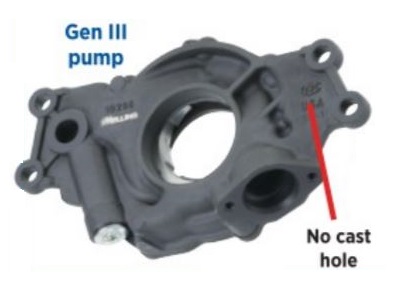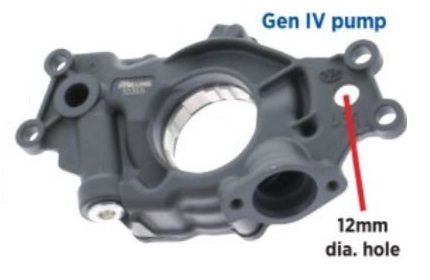Q. I’m building a twin-turbo Chevy LQ4 engine and I’m not sure which oil pump to use. Melling’s Performance line has several to choose from. Can you give me some tips on oil pump selection?
A. An evaluation of your oil pump volume and pressure is required any time engine modifications are made that alter the demand for oil supply. These modifications include wider bearing clearances, high-flow lifters, piston or valve spring oilers, adding an oil accumulator, oil cooler, or turbocharger. (Or, in the case of an aftermarket blocks with priority main oiling, reduced oil volume.)
To understand this in detail, let’s look at how an engine’s oil pump works. The pump creates oil flow, and the engine provides resistance to that flow, resulting in pressure.
As engine temperature increases, clearances grow and oil viscosity reduces, increasing the engine’s demand for oil. You can see this on the oil pressure gauge as the oil warms up. Most oil pumps have an internal bypass valve that regulates oil pressure and returns the bypassed oil to the pump’s inlet port; the relief pressure is the only available adjustment on a stock-style pump.
The pump’s rotor width determines the pump volume—this is manufactured into the pump and cannot be adjusted,
At the bottom of this post is a list of Melling Performance LS Gen. III and Gen. IV oil pumps. These pumps come with a +10 psi spring (except MEL-10294) and include optional springs for pressure adjustment.
And if you want to learn more about the LS engine’s oiling system, check out this in-depth video from Melling:


- MEL-10294 – Low volume (-15%), standard pressure. Specifically designed for aftermarket blocks with priority main oil systems
- MEL-10295 – Standard volume, high pressure. For Gen. III engines that use MEL-M295 as stock pump.
- MEL-10296 – This pump is the same as MEL-10295 only with 18% more volume.
- MEL-10355 – Standard volume/high pressure. For Gen. IV engines that use MEL-M355 or MEL-M365 as a stock pump. This pump has 33% more volume than MEL-10295 to support AFM/DOD (cylinder deactivation) requirements.
- MEL-10355HV – Same as MEL-10355, only with 20% more volume.

Not sure that you answered the writer’s question. Which conditions require increased pressure vs. which require increased volume? Or both? This just notes that you need and “evaluation” when you make changes.